Mark Sisson's Blog, page 33
December 22, 2021
The #1 Gift You Can Give Yourself This Year
 There are some amazing story-tellers out there in the world, on the television, in the newspapers, on social media. Omnipresent narrators with an authoritative command of language and imagery and sound and special effects that wield supreme confidence. Doesn’t matter if the stories they tell are largely fictional. They sound and look good so we believe them. We can’t help but pay attention and give them credence even if we tell ourselves we don’t.
There are some amazing story-tellers out there in the world, on the television, in the newspapers, on social media. Omnipresent narrators with an authoritative command of language and imagery and sound and special effects that wield supreme confidence. Doesn’t matter if the stories they tell are largely fictional. They sound and look good so we believe them. We can’t help but pay attention and give them credence even if we tell ourselves we don’t.
For you are a story-telling hominid. It’s in your DNA. You respond to stories—on a guttural, instinctual level. You perceive your daily existence as a story unfolding into the future and stretching back through time. We are vulnerable to the power of stories.
And so for this holiday season, this Christmas, or winter solstice, or whichever one you follow, give yourself the license to tell your own story.
Used to be around the campfire you’d tell stories about the day’s adventures, the hunts successful or failed, the trickster gods, the founding myths, the battles won or lost. Or you’d heed the stories of your close community, your village, your tribe. These were people with close ties to you. Maybe even blood ties. They knew you, and you knew them. It wasn’t all hunky dory, but at least you were all in the same boat together, aiming for the same general outcomes. Those stories you could trust. And because they were “smaller scale” stories, you could also verify the ones you didn’t quite trust.
That was a limited world and we can’t return to it, and there are many benefits to living in the modern far-flungness of the contemporary, but you can’t help but note the downsides. Atomization. Lack of meaning and purpose. Traditions shattered whose pieces you pick up and try to reassemble. And stories whose provenance you can’t verify with your own two eyes through direct experience.
Instead, you have to research and second-guess everything. Triple-guess, even. You have to fact-check the stories and then fact-check the fact-checkers. Everyone’s trying to sell you their version of reality—in order to sell something to you, convince you to go along with a narrative, or “nudge” you toward some desired behavior or outcome.
This isn’t necessarily a new phenomenon, but never before have the storytellers had such influence while also having so little direct connection to the consumers of the narrative.
That’s where we find ourselves: subjects to the Narrative, or narratives.
This cannot continue. You are the protagonist, not a random side character that appears once or twice only to be subsumed into the narrative. When we stop telling our own story, or never start in the first place, we lose ourselves. When we tell our own story, we become the main character. And what happens in every story ever told when the protagonist accepts his or her role in the narrative?
The protagonist rises to the occasion. The protagonist becomes the hero.
That’s the power of story that you need to access.
To start telling your own story, you need to stop ignoring the gut check. If a story sounds fishy or goes against your own direct experience, don’t accept it at face value. Never discard or discount what you know to be true, what your nervous system tells you is probably the case. Instead, regard these stories that contradict your own with extreme suspicion. They require ironclad verification.
Remember: the human gut produces a large majority of your neurotransmitters.
Remember: a direct line of communication runs from the gut to the brain.
Remember: your nervous system is working for you and knows more than you suspect. Ignore it at your peril.
Remember: you’re not ignoring reality. You are discerning.
Don’t disappear. Become the Hero. And remember that heroes come in all shapes and sizes. “Hero” is a relative term—all that matters is that you tell your own story and display agency.
Heroism starts with agency. Going upstream. Charting a course. Deciding. Acting. Writing the story as it unfolds.
How are you going to start telling your own story this year?
(function($) { $("#dfiCHEG").load("https://www.marksdailyapple.com/wp-ad..." ); })( jQuery ); 
The post The #1 Gift You Can Give Yourself This Year appeared first on Mark's Daily Apple.


December 18, 2021
Cornish Hens with Gluten-free Gravy Recipe (with Air Fryer Option!)
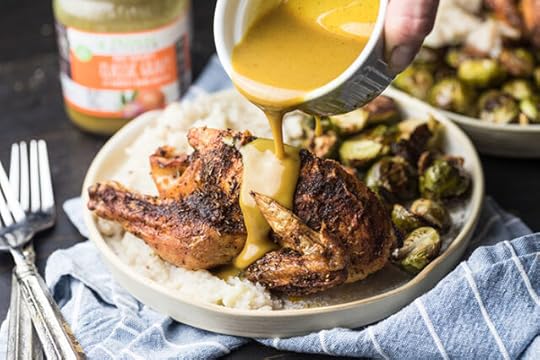 We’re all about easy meals here at Mark’s Daily Apple, but sometimes you want to step it up and make something a little special. Who says you can’t serve an impressive meal that’s also simple? Here, we made air fryer cornish hens over mashed root veggies with a side of roasted Brussels sprouts. It’s easy to prepare and is a step up from your typical weekday fare.
We’re all about easy meals here at Mark’s Daily Apple, but sometimes you want to step it up and make something a little special. Who says you can’t serve an impressive meal that’s also simple? Here, we made air fryer cornish hens over mashed root veggies with a side of roasted Brussels sprouts. It’s easy to prepare and is a step up from your typical weekday fare.
Here’s how to make it.
Cornish Hens with Brussels Sprouts and Gravy Recipe
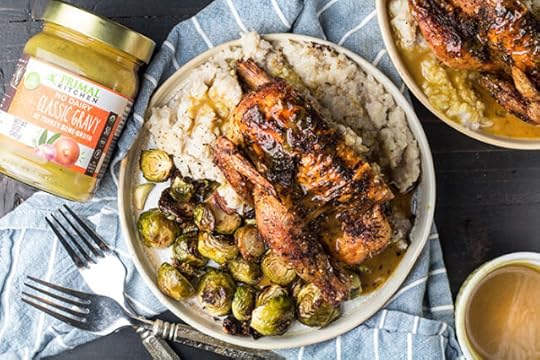
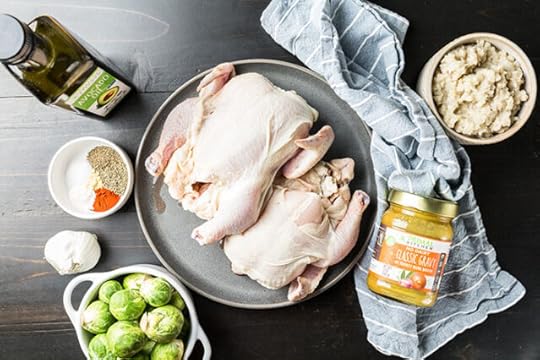
Drizzle and rub the avocado oil all over the hens.
 In a small bowl, combine all of the spices together and sprinkle them on all sides of both of the hens. Place the cornish hens on a baking sheet or an air fryer rack.
In a small bowl, combine all of the spices together and sprinkle them on all sides of both of the hens. Place the cornish hens on a baking sheet or an air fryer rack.

Preheat your air fryer to 350 degrees Fahrenheit if you are using an air fryer with a stainless basket, or 380 degrees if using an air fryer with a plastic basket. Place the hens breast side down and air fry for about 30 minutes. Flip the birds over and continue air frying until the internal temperature reaches 165-180 degrees Fahrenheit in the thickest part of the breast and thigh (check the packaging on your hens to confirm cooking temperature). For a crispier bird, you can increase the temperature to 375 or 400 respectively and air fry until the skin crisps up. The overall time and temperature it takes will depend on the type of air fryer you have.
Oven InstructionsPreheat your oven to 375 degrees. Place the hens on a sheet pan or baking sheet and roast for about 55 minutes. Check the internal temperature and place back in the oven if necessary, until the internal temperature of the thickest part of the breast and thigh reach 165-180 degrees Fahrenheit.

To prepare the brussels sprouts, cut off the tough ends and cut them in half lengthwise. Toss them in the avocado oil, sliced garlic, and a pinch of salt and pepper. Lay them out on a glass baking dish or roasting pan and roast at 375 degrees for about 40-45 minutes, or until golden, Alternatively, you can place them in your air fryer and air fry at 350 or 375 degrees for about 15 minutes, or until golden. The overall time and temperature it takes will depend on the type of air fryer you have.
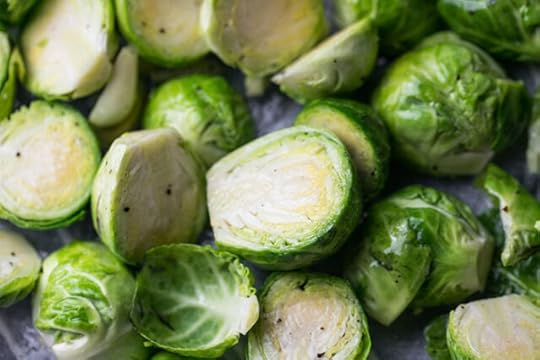
Once the hens have cooled slightly, slice them in half and serve each half with a helping of crispy brussels sprouts and a serving of mashed root veggies. Pour the Primal Kitchen Classic Gravy on top and enjoy!




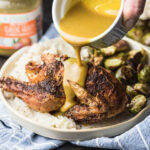 Cornish Hens with Gluten-free Gravy Recipe (with Air Fryer Option!) Author: Mark's Daily Apple
Cornish Hens with Gluten-free Gravy Recipe (with Air Fryer Option!) Author: Mark's Daily Apple  Total Time: 35 minutes
Total Time: 35 minutes  Yield: 4-6 servings Diet: Gluten Free [image error] Print Recipe [image error] Pin Recipe Description
Yield: 4-6 servings Diet: Gluten Free [image error] Print Recipe [image error] Pin Recipe Description Cornish hens with grain-free, no gluten gravy over root veggie mash and brussels sprouts.
Ingredients2 cornish hens
2 tsp. dried thyme
1 tsp. salt
1 tsp. black pepper
1 tsp. onion powder
1 tsp. smoked paprika
1/2 tsp. mustard powder
1.5 tbsp. avocado oil
Roasted Brussels Sprouts2 tbsp. avocado oil1.5 lb. brussels sprouts4 cloves sliced garlicSalt and pepper InstructionsDrizzle and rub the avocado oil all over the hens. In a small bowl, combine all of the spices together and sprinkle them on all sides of both of the hens. Place the cornish hens on a baking sheet or an air fryer rack.
Air Fryer instructions:
Preheat your air fryer to 350 degrees Fahrenheit if you are using an air fryer with a stainless basket, or 380 degrees if using an air fryer with a plastic basket. Place the hens breast side down and air fry for about 30 minutes. Flip the birds over and continue air frying until the internal temperature reaches 165-180 degrees Fahrenheit in the thickest part of the breast and thigh (check the packaging on your hens to confirm cooking temperature). For a crispier bird, you can increase the temperature to 375 or 400 respectively and air fry until the skin crisps up. The overall time and temperature it takes will depend on the type of air fryer you have.
Oven Instructions:
Preheat your oven to 375 degrees. Place the hens on a sheet pan or baking sheet and roast for about 55 minutes. Check the internal temperature and place back in the oven if necessary, until the internal temperature of the thickest part of the breast and thigh reach 165-180 degrees Fahrenheit.
To prepare the brussels sprouts, cut off the tough ends and cut them in half lengthwise. Toss them in the avocado oil, sliced garlic, and a pinch of salt and pepper. Lay them out on a glass baking dish or roasting pan and roast at 375 degrees for about 40-45 minutes, or until golden, Alternatively, you can place them in your air fryer and air fry at 350 or 375 degrees for about 15 minutes, or until golden. The overall time and temperature it takes will depend on the type of air fryer you have.
Once the hens have cooled slightly, slice them in half and serve each half with a helping of crispy brussels sprouts and a serving of mashed root veggies. Pour the Primal Kitchen Classic Gravy on top and enjoy!
NotesCornish hens vary a bit in size and are usually around 1-1.5 pounds. This will influence how long they take to cook, and how many people they feed. For a larger bird, aim for half of a hen per serving. For smaller hens, you may be able to serve each person a whole hen.
Defer to the cooking instructions that came with your cornish hens if you have any. Some packaging recommends cooking hens to 180 degrees, which differs a bit from the typical 165 degrees for other poultry.
Every air fryer is a bit different, so defer to your manual on ideal cooking times and temperatures. I’ve found that steel-insert air fryers tend to cook a bit more hot and quickly than plastic insert fryers. If the air fryer function on yours runs quite hot and you have a convection bake option, that might be an option to use instead to make sure your hens cook on the inside as well as the outside.
Feel free to switch up the spice blend used on the cornish hens. Another option would be grated lemon, freshly grated garlic, chopped rosemary, salt, pepper and onion powder.
Not a fan of brussels sprouts? Swap it out for your favorite ve
 Prep Time: 5 min
Prep Time: 5 min Cook Time: 30 min
Cook Time: 30 min Category: Lunch, Dinner
Category: Lunch, Dinner Method: Air Fryer
Method: Air Fryer Cuisine: American Nutrition Serving Size: 1/2 hen, 1/4 brussels Calories: 521.6 Sugar: 3.8 g Sodium: 715.6 mg Fat: 36 g Saturated Fat: 8 g Unsaturated Fat: 25.32 Trans Fat: .46 g Carbohydrates: 17.4 g Fiber: 6.9 g Protein: 34.8 g Cholesterol: 168.3 mg Net Carbs: 10.41 g
Cuisine: American Nutrition Serving Size: 1/2 hen, 1/4 brussels Calories: 521.6 Sugar: 3.8 g Sodium: 715.6 mg Fat: 36 g Saturated Fat: 8 g Unsaturated Fat: 25.32 Trans Fat: .46 g Carbohydrates: 17.4 g Fiber: 6.9 g Protein: 34.8 g Cholesterol: 168.3 mg Net Carbs: 10.41 g Keywords: cornish hens recipe, air fryer cornish hens recipe, gluten free gravy chicken recipe
 Did you make this recipe?
Did you make this recipe? Share a photo and tag Mark's Daily Apple — we can't wait to see what you've made!
(function($) { $("#dfFdmyX").load("https://www.marksdailyapple.com/wp-ad..." ); })( jQuery ); 
The post Cornish Hens with Gluten-free Gravy Recipe (with Air Fryer Option!) appeared first on Mark's Daily Apple.


December 17, 2021
New and Noteworthy: What I Read This Week—Edition 158
 Research of the Week
Research of the Week
How personalities changed during the pandemic.
The Celts arrived in Britain in the mid-to-late Bronze Age, introducing both language and lactase persistence that still persist today.
Fewer grazing animals, more fires.
Mammoths lived longer than the fossil record would suggest.
Night workers have healthier circadian rhythms and glucose control when they eat during the day.
New Primal Kitchen PodcastsEpisode 11: Getting Kids to Kick Sugar with Sugarproof Authors Dr. Ventura and Dr. Goran
Primal Health Coach Institute: Jennifer Nagel is an established and seasoned health and fitness veteran passionate both about helping women achieve better health and health coaches build better businesses.
Primal Health Coach Institute: Dr. Glenn Livingston helps you face your inner pig.
Media, SchmediaA Scotsman, a kilt, and a husky walk into a Canadian forest…
More proof that Beyond Meat is awful and everyone knows it.
Interesting Blog PostsLet’s make the Bison Sphere.
Social NotesI love resistance bands.
Everything ElseIs your cat a psychopath?
How much would a billion oysters cost?
People tend to escalate the situation in nuclear war simulations.
Things I’m Up to and Interested InInteresting paper: How meat-eating led to bigger brains, better cognition, but also more zoonotic pathogens and plant medicines.
How could this be?: More cattle, more biodiversity.
Terrifying thought: A carnivorous dinosaur that ran faster than Usain Bolt.
Not surprised: Books beat tablets.
Oops: More animal protein, less mortality.
Question I’m AskingDid you know this?
Recipe CornerAir fryer fish sticks.Neapolitan-style braised salt cod.Time CapsuleOne year ago (Dec 11 – Dec 17)
How to Really Bond With Your Family This Holiday Season — How to do it.What I’m Doing For Christmas— What I did last year.Comment of the Week
“Speaking of eternities from your Sunday with Sisson, perhaps they do exist. But perhaps it’s the flip of what we feel to be true. The future and the past feel eternal but are finite, while the present feels fleeting but is eternal. Our whole lives is spent living in the eternal present.”
-Well said, Aaron.
(function($) { $("#dfr4zlB").load("https://www.marksdailyapple.com/wp-ad..." ); })( jQuery ); 
The post New and Noteworthy: What I Read This Week—Edition 158 appeared first on Mark's Daily Apple.


Ask a Health Coach: Intolerances, Electrolytes, and Epigenetics
Hi everyone, this week we’re excited to have board-certified Health & Wellness Coach, Chloé Maleski here to answer your questions. She’ll be talking about the validity of food intolerances, how to make the first few weeks of keto more manageable, and why genetics don’t have to dictate your health. Got a question for our coaches? Drop it in the comments below or over in the Mark’s Daily Apple Facebook group.
Vlad asked:
“I think I might have an almond/nut allergy or intolerance. When I unknowingly eat products that might have almond flour, 24-48 hours later I experience what feels like a head cold (runny nose, cottonmouth, drowsy, fatigue) for a few days along with some bad gas. Does this even exist? Is it common?”
From a Primal point-of-view, nuts can be a great addition to most diets. Nuts are satisfying, satiating, and have healthy fats, decent protein, and nominal carbs. If you can get past the phytic acid issue (I know I can), they’re a near-perfect food — except for folks with a nut allergy or intolerance. Which sounds like what you might be dealing with. According to this research, 1.1% of the general population (that’s about 3 million Americans) have a tree nut or peanut allergy. And yes, peanuts are more accurately a legume, but that’s not the point.
The point is this, most people have been taught to completely disregard any and all physical, mental, and emotional symptoms they’re experiencing. They’re so busy operating on autopilot (and likely having some of the symptoms below), trying to do what’s “right” versus noticing what’s right for them.
Common food intolerance symptoms include:
BloatingStomach painGasDiarrheaMigrainesHeadachesBrain fogRunny noseFatigueCommon food allergy symptoms include:
HivesSwellingCongestionDifficulty swallowingItchy or tingly mouthShortness of breathNausea or vomitingAnaphylaxis (which is potentially life-threatening)Instead of tuning into these symptoms, most people flat out ignore what’s going on, or chalk them up to something else. Let this be your friendly health coach reminder that no one knows your body better than you do. Not your primary care doc. Not your spouse. Not even the most seasoned health coaches. Also, and I know this one can be tough to hear, not all dietary approaches are right for all people.
This is a huge block for people who are following their diet du jour, faithfully keeping tabs on which foods are “good” and which are “bad” and having no clue why they still feel awful.
You have a unique metabolic expression. Meaning, what works for someone else might not work for you. And vice versa. If I were you, I would eliminate almonds, almond flour, and anything made from them for 2-3 weeks, including almond milk, protein bars, and paleo cakes and cookies. (Just FYI, if you have an actual nut allergy, I would eliminate those foods for good.)
After 2 or 3 weeks are up, reintroduce your favorite almond-based products. And not just a bite or two of the leftover almond milk ice cream that’s waiting for you in the freezer. For the first few days, load up on almonds – and foods made with almonds. If your symptoms return, take them out again (or take them out forever). If they don’t, consider yourself free to eat ‘em.
Jordan asked:
“What data should I be collecting about my body/health if I’m at risk for developing diabetes? What tests should I do? I’m pretty sure there’s a genetic component for me.”
It’s smart to be concerned about diabetes, especially since it sounds like it runs in your family. But just because you have the genetic coding for it, doesn’t mean you’ll get it. If you’ve ever read up on epigenetics, you know what I’m talking about. Epigenetics is the idea that you can reprogram your genes through dietary, behavioral, and environmental changes.
And there’s been tons of research to back this up. One of the most interesting being a study that looked at the genetic variance of desert nomads, mountain agrarians, and urban residents in North Africa.1 They had similar genetic patterns (basically they were all from the same genetic stock), but had very different habits and living conditions. Researchers analyzed the white blood cells of the groups to study the impact of traditional lifestyles versus modern ones. Turns out, the group living in an urban environment had upregulated respiratory and immune genes, while the genes in their more traditional-living counterparts stayed dormant.
In all the groups, the genes stayed the same, but the expression of those genes changed depending on how the residents lived. That’s epigenetics.
As controversial as it might be, there’s also evidence that epigenetics explains why COVID-19 affects some people mildly and is completely devastating for others.2
So, how do you reprogram your genes? When it comes to blood sugar balance (i.e. avoiding a diabetes diagnosis), here are five things you can do today:
Go for a walk after meals3Eat more protein and fatEat less refined carbsPractice deep breathing exercisesGet a good night’s sleep tonightThat being said, there are certain tests you can do to monitor your blood sugar — from glycated hemoglobin (A1C) tests that measure the degree of glycation in your red blood cells’ hemoglobin to a wearable glucose monitor that measures your blood sugar throughout the day and night.
And if you need help, I highly recommend working one-on-one with a coach in the new myPrimalCoach app. If you haven’t checked it out yet, you can do so here.
Debbie asked:
“I had 24g carbs yesterday and felt okay. I ate dinner at 6pm, went to bed at 9:30pm, and when I got up at 5:30am, I felt a little off, weak, and light-headed. I’ve tried keto before, keeping carbs to 20 grams and it was really hard on my body. I felt sick the whole time. Is it possible to have a body that just can’t do keto?”
Like I said earlier, not every “diet” works for every person. We are all physically and metabolically different and just because some people have success with keto, doesn’t mean you will. But (and stay with me here) it doesn’t mean you won’t.
I’m not a big fan of measuring, counting, and tracking in general. However, you might consider that the 20-ish grams of carbs aren’t necessarily the culprit of your malaise. There are so many other factors to think about. For instance:
How is your sleep?Are you eating enough fat and protein (and calories)?Do you need more carbs? Up to 50 grams per day is keto-approved (or higher if you’re active)Are you exercising too much?Are you adding electrolytes to your water?That last one, in my experience, is most likely to blame. When you first go keto, you deplete your glycogen stores, which is totally normal. Unfortunately, the result of this depletion is water loss. Every time you lose a gram of glycogen, you lose four grams of water and a whole lot of sodium, magnesium, and potassium. And because going keto lowers insulin too, you also naturally reduce sodium retention, which can off-set the delicate balance of your electrolytes. Hence, needing to supplement with a brand like Ultima or LMNT.
There are lots of ways to be healthy and/or reach a specific health goal. And keto is just one of them. So, play around with a few variables and see what happens. You might be surprised at the outcome.
Do you agree? Disagree? Tell me what you think in the comments.
The post Ask a Health Coach: Intolerances, Electrolytes, and Epigenetics appeared first on Mark's Daily Apple.


December 15, 2021
7 Herbal Alternatives to Hormone Replacement Therapy, or HRT
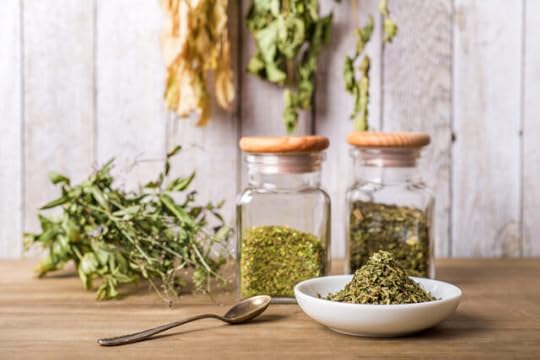 For many women, menopause can introduce new health challenges. In addition to the symptoms that perturb basic quality of life like hot flashes, headaches, night sweats, and irritability, menopause is also associated with higher risks for serious health concerns like osteoporosis, cognitive decline, and metabolic syndrome. This has made the standard treatment for menopause—hormone replacement therapy, or HRT—a multi-billion dollar business.
For many women, menopause can introduce new health challenges. In addition to the symptoms that perturb basic quality of life like hot flashes, headaches, night sweats, and irritability, menopause is also associated with higher risks for serious health concerns like osteoporosis, cognitive decline, and metabolic syndrome. This has made the standard treatment for menopause—hormone replacement therapy, or HRT—a multi-billion dollar business.
A few weeks ago, I explored the benefits and risks of HRT. It has its merits certainly, but it’s not for everyone. Today’s post is for those people who want to try something else. Say you’ve waded through the morass of HRT research and would prefer a different route. Or maybe you’ve actually tried conventional or bioidentical HRT and found it just didn’t work for you. Whatever the reason, you’re probably interested in using “natural” products if you can swing it and if it’ll actually help.
Are there herbal alternatives to HRT that actually work?
As a matter of fact, there are.
Which Herbal Hormone Replacement Therapy (HRT) Treatments Work?These are the eight most promising herbal alternatives to hormone replacement therapy:
Black CohoshMacaBlack Seed OilRed CloverGinsengEvening PrimroseSt. John’s WortWild YamBlack Cohosh for Sleep and Hot FlashesA medicinal herb native to North America, black cohosh was traditionally used to treat a wide variety of conditions, including rheumatism and other arthritic conditions, colds, fevers, constipation, hives, fatigue, and backache. They used it to help babies get to sleep and soothe kidney troubles. In the mid 20th century, it gained popularity in Europe as a treatment for women’s hormonal issues. Modern clinical research bears out its relevance for menopause:
It’s effective against hot flashes, reducing both severity and frequency.https://www.ncbi.nlm.nih.gov/pubmed/2... improves objective markers of sleep quality (the reduction in hot flashes certainly can’t hurt).https://www.ncbi.nlm.nih.gov/pubmed/2... improves insulin sensitivity, which often degrades during menopause.It improves early post-menopausal symptoms across the board, leading to a 12.9 point reduction in the Green climacteric score (a basic measure of menopause symptom severity).https://www.ncbi.nlm.nih.gov/pubmed/2... one study, black cohosh was comparable to conventional HRT for reducing most menopausal symptoms and better at reducing anxiety, vaginal bleeding, and breast tenderness.https://www.ncbi.nlm.nih.gov/pubmed/2... for Weight Management and Sexual FunctionIn its native Peru, maca root was traditionally used as a root vegetable (like a turnip or radish), as well as for its pharmacological properties as an aphrodisiac and subtle stimulant. Incan warriors reportedly used it as a preworkout booster before battles. Today, we know it as an adaptogen—a substance that helps your endocrine system adapt to stress, rather than force it in one direction or another.
A 2011 review of the admittedly limited evidence found that maca shows efficacy against menopause.https://www.ncbi.nlm.nih.gov/pubmed/2... displayed the ability to lower depression and blood pressure in menopausal women.https://www.ncbi.nlm.nih.gov/pubmed/2... earlier, maca helped perimenopausal women resist weight gain and menopausal women regain their sexual function and reduce depression and anxiety.https://www.ncbi.nlm.nih.gov/pubmed/1...https://www.ncbi.nlm.nih.gov/pmc/arti... to a 2005 study, maca actually lowers follicle-stimulating hormone and increases luteinizing hormone in postmenopausal women, thereby increasing estrogen and progesterone production.https://www.ncbi.nlm.nih.gov/pmc/arti... Seed Oil for Metabolism and Bone DensityThe oil of the black cumin seed is a “good seed oil.” Used for thousands of years as a medicinal herb, it has remarkable effects on oxidative stress, inflammation, and even allergy symptoms, but it also shows promise as a treatment for menopause.
Menopausal women who took black seed powder (the actual seed, powdered) saw a reduction in metabolic syndrome, improving both blood lipids and blood glucose. Notably, there was no change in body weight, indicating a powerful effect of the black seed alone.https://pubmed.ncbi.nlm.nih.gov/24409... seed oil supplementation improved biomarkers related to bone density in postmenopausal women.https://pubmed.ncbi.nlm.nih.gov/34496... Clover for Night Sweats, Hot Flashes, Bones, and MoreThe red clover blossom is a rich source of isoflavones, estrogen-like compounds that interact with receptors in our bodies and relieve many symptoms of menopause.
Twelve weeks of red clover cuts the Menopause rating score in half (a good thing!).https://www.ncbi.nlm.nih.gov/pubmed/2... weeks greatly reduces the intensity and frequency of hot flashes and night sweats. Including some probiotics has a similar effect.https://www.ncbi.nlm.nih.gov/pubmed/2...https://www.ncbi.nlm.nih.gov/pubmed/2... clover also improves vaginal cellular structure and function while (again) improving menopause symptoms and reducing triglycerides.https://www.ncbi.nlm.nih.gov/pubmed/1... exciting, there’s reason to believe that red clover may reduce the risk of breast cancer and improve bone mineral density in menopausal women.https://www.ncbi.nlm.nih.gov/pubmed/1... for Sexual Function and Hot FlashesGinseng doesn’t have as broad an application for menopause as some of the other herbs, but what it does it does well.https://www.ncbi.nlm.nih.gov/pubmed/2...
It improves sexual function.It increases libido.It reduces the total hot flash score.However, ginseng does not appear to reduce oxidative stress, improve endometrial thickness, or reduce hot flash frequency. Still helpful if you’re suffering from any of the conditions it does improve.
Evening Primrose Oil for Mental and Social BenefitsEvening primrose is another “good seed oil,” extracted from the seeds of the evening primrose flower and high in gamma linolenic acid.
It’s good for hot flashes, and that tends to improve other things like socializing and sex.It also improves psychological symptoms of menopause.https://pubmed.ncbi.nlm.nih.gov/31738... (a fatty acid found in evening primrose oil) can reduce bloating and swelling.Here’s some cold-pressed primrose oil.St. John’s Wort for Hot Flashes and DepressionYou might remember St. John’s Wort as an herbal treatment for such conditions as depression and anxiety, but it’s also quite effective against certain symptoms of menopause.
In one study, 3 months of daily St. John’s Wort supplementation helped perimenopausal women go from three hot flashes to one hot flash a day, get better sleep, and have a better quality of life.https://www.ncbi.nlm.nih.gov/pubmed/1... another, it took 8 weeks of St. John’s Wort for both perimenopausal and postmenopausal women to reduce the frequency and severity of their hot flashes.https://www.ncbi.nlm.nih.gov/pubmed/2... also combined it with black cohosh to successfully treat hot flash-related moodiness.https://www.ncbi.nlm.nih.gov/pubmed/1... Yam for Overall Menopause SymptomsThe yam has been used for hundreds of years for menopause treatment. These days, we know it improves symptoms in menopausal women, though we’re not exactly sure why. The study is actually pretty interesting:https://pubmed.ncbi.nlm.nih.gov/16093...
Women swapped out their staple starch (rice) for yams. They ate about a pound of yams a day.There was another control group who switched from rice to sweet potatoes (not the same thing as yams).At the end of the trial, the yam eaters had better antioxidant status, better lipids, LDL particles more resistant to oxidation, and higher estrogen levels. The sweet potato eaters were unchanged.Before you go fill your Amazon cart with supplements and start chowing down on powders and pills, however, make sure you’re making the right move.
Talk to your doctor about the herbal alternatives mentioned. Discuss and research potential interactions with medications and even supplements you’re already taking. Be sure to cite the relevant references.
Minimize the variables. Don’t start taking everything from this article. Start with one and evaluate.
Don’t underestimate the power of plants. Just because something is “herbal” or “botanical” doesn’t mean it’s completely benign at all doses.
Oh, and make sure you’re also addressing the potential dietary and behavioral interventions you can try.
That’s it for today, folks. Take care, and be sure to write in down below.
Have you ever used any herbs or botanicals to treat menopause symptoms? If so, what worked? What didn’t?
(function($) { $("#dfGPr21").load("https://www.marksdailyapple.com/wp-ad..." ); })( jQuery );
References https://www.ncbi.nlm.nih.gov/pubmed/29619387https://www.ncbi.nlm.nih.gov/pubmed/26000551https://www.ncbi.nlm.nih.gov/pubmed/24499633https://www.ncbi.nlm.nih.gov/pubmed/23769553https://www.ncbi.nlm.nih.gov/pubmed/21840656https://www.ncbi.nlm.nih.gov/pubmed/24931003https://www.ncbi.nlm.nih.gov/pubmed/18784609https://www.ncbi.nlm.nih.gov/pmc/articles/PMC3614596/https://www.ncbi.nlm.nih.gov/pmc/articles/PMC3614576/https://pubmed.ncbi.nlm.nih.gov/24409406/https://pubmed.ncbi.nlm.nih.gov/34496087/https://www.ncbi.nlm.nih.gov/pubmed/25581426https://www.ncbi.nlm.nih.gov/pubmed/21870906https://www.ncbi.nlm.nih.gov/pubmed/28591133https://www.ncbi.nlm.nih.gov/pubmed/16373244https://www.ncbi.nlm.nih.gov/pubmed/15876415https://www.ncbi.nlm.nih.gov/pubmed/27661038https://pubmed.ncbi.nlm.nih.gov/31738736/https://www.ncbi.nlm.nih.gov/pubmed/19194342https://www.ncbi.nlm.nih.gov/pubmed/20216274https://www.ncbi.nlm.nih.gov/pubmed/17590291https://pubmed.ncbi.nlm.nih.gov/16093400/
The post 7 Herbal Alternatives to Hormone Replacement Therapy, or HRT appeared first on Mark's Daily Apple.


December 14, 2021
Dear Carrie: Hot Flashes
 From time to time, my wife Carrie pops in to answer questions from readers requesting a Primal woman’s perspective. Today, we’re updating a post she a while back regarding hot flashes and menopause. This topic continues to generate a lot of interest, so we wanted to ensure that the info here is up to date. Enjoy!
From time to time, my wife Carrie pops in to answer questions from readers requesting a Primal woman’s perspective. Today, we’re updating a post she a while back regarding hot flashes and menopause. This topic continues to generate a lot of interest, so we wanted to ensure that the info here is up to date. Enjoy!
Hi, everyone! Thanks for the opportunity to offer my perspective on living Primal. I love this community and always enjoy contributing!
Mark and I both get a lot of questions about how our Primal lifestyle has helped us navigate the ups and downs of getting older. Women often want to know, specifically, how I’ve fared during menopause. Let me tell you, it’s not always an easy road. Although there is a lot to appreciate about reaching “a certain age,” the physical, mental, and emotional symptoms of menopause aren’t always pleasant, to say the least. If you’re in the throes of menopause yourself, I bet you can relate.
For today, I thought I’d take up reader Barb’s question about hot flashes and sleep:
I’ve just been looking for information regarding hot flashes increasing on the Primal diet for peri and menopausal women. Based on my research, it seems like I am not alone and am wondering if you could do a more pointed column on this? I am dying from no sleep – up every night between 12 and 5 cycling through hot flashes. For the first time in 17 months on the Primal lifestyle, I feel like crap, and it’s all from the sleep deprivation. I’d like to make one last valiant effort with diet, lifestyle and supplements before I go the bioidentical hormone route. Hoping you might have some suggestions?
Thanks to Barb for the great question. Since some three-quarters of women experience hot flashes during the menopause transition, it’s a subject well worth exploring.
What Causes Hot Flashes?For those of you unfamiliar with the experience, hot flashes occur when blood vessels in the head and neck suddenly expand. They can come during the day or night with or without sweating and other symptoms like dizziness, faster heart rate, or headache. Hot flashes start in the years leading up to menopause (aka, perimenopause) as estrogen levels sharply drop. They often resolve themselves over time but can linger for some women well into their postmenopausal years.
Scientists believe hot flashes are a result of the hormonal changes that occur during the menopausal transition. Hot flashes are associated with both the withdrawal from estrogen hormones women experience in the perimenopausal and menopausal years as well as the “surges” of luteinizing hormone that occur during this time.https://www.ncbi.nlm.nih.gov/pmc/arti... It may be that the body’s internal thermostat (regulated by the hypothalamus) needs time to recalibrate with ongoing hormonal changes, and that dysregulation is what causes hot flashes.
That said, the exact causes are still something of a mystery. Although they are probably related to estrogen, for example, women with the biggest drops in estrogen don’t reliably get the most hot flashes. Talk to a dozen women who regularly experience hot flashes, and you’ll find that each of them has identified different triggers (foods or activities that tend to bring on a hot flash). That’s if there’s any rhyme or reason at all. There are also interesting cross-cultural differences where women in some cultures tend to sail through menopause with few unpleasant symptoms, and nobody knows for sure why.
Hot Flashes and SleepWomen with severe hot flashes (in terms of both intensity and frequency) can have their sleep regularly disrupted and are at risk for chronic insomnia, like Barb has been experiencing. Given that some women can experience several a night that may last up to thirty minutes each, a good night’s sleep can be next to impossible.
The effects can be grueling over time. To compound the problem, women are also at a higher risk for other sleep disorders like sleep apnea during and following menopause because of the shift in hormones.https://pubmed.ncbi.nlm.nih.gov/11451...
For that reason, impeccable sleep hygiene is a must. It won’t stop the hot flashes, but at least it gives you the best chance of otherwise getting some rest. You probably know all the usual advice for dealing with mid-night hot flashes:
Sleep in a cool room with a fan or open windowAvoid caffeine, alcohol, and spicy foods at nightWear lightweight, moisture-wicking pajamasRun cold water over your wrists or place cool packs on the back of your neck when you feel a hot flash coming onThose might help to an extent. They certainly can’t hurt. Chances are you’ve already tried them, though, and need something more.
What You Can Do to Help Reduce Hot FlashesAlthough most women will experience some degree of hot flashes during menopause, certain factors like obesity, smoking, and inactivity can put you at higher risk.
Barb asked specifically about whether eating Primally might make hot flashes worse, but I don’t know why that would be the case. Some women find that caffeine, alcohol, sugar, and spicy foods exacerbate their hot flashes, but I’ve seen no evidence that a Primal/paleo way of eating would be detrimental. If anything, cutting back on the sugary desserts and getting healthier in general should help.
Still, you know your body best. Look for patterns between what you eat and your hot flash frequency. Some of my friends do better when they eliminate nightshades or when they add more soy, but it’s all very individual. (I know soy isn’t technically Primal, but there’s a case for making an exception here.)
Mind-body TherapiesAs for alternative remedies, I would give acupuncture a chance. The research looks pretty good as a whole,https://pubmed.ncbi.nlm.nih.gov/29298... and I can say it’s had a positive impact for me personally. It took a few sessions before I started noticing the effects, though.
Exercise and relaxation techniques also help many women cope with both the hot flashes themselves and the resulting sleep deprivation. Even if your hot flashes don’t decrease noticeably, it’s always a good idea to practice gentle movement and mindfulness. They can improve your overall mental well-being, especially when you’re feeling uncomfortable in your body. Likewise, there’s some evidence that cognitive behavioral therapy (CBT) helps some women deal with the effects of menopausal symptoms even if it doesn’t reduce the hot flashes themselves.https://pubmed.ncbi.nlm.nih.gov/24149...
Herbs and Supplements for Hot FlashesIn terms of herbs, you could try black cohosh or chasteberry, both of which are used in Europe for managing menopausal symptoms. Other common options women try include evening primrose oil,https://pubmed.ncbi.nlm.nih.gov/23625... red clover,https://www.ncbi.nlm.nih.gov/pubmed/2... and maca root.https://www.ncbi.nlm.nih.gov/pmc/arti... Personally, I haven’t had great luck with herbal remedies, but some of my friends have. Again, it’s highly personal.
Although your best bet for menopause nutrition is an all-around nutrient-dense diet, you might try increasing your intake of vitamin E, along with vitamin C to aid the absorption of vitamin E.https://pubmed.ncbi.nlm.nih.gov/17664...
Bioidentical Hormone Replacement TherapyAlthough I think lifestyle and nutrition should always be top priorities for any health-related concern, I also want to offer a word of support for Barb and other women who are looking at bioidentical hormones. Mark and I have both been open about our own choices to explore hormone therapies at different points in our lives. They can be a game-changer, especially if you aren’t getting relief from natural means.
Years ago, I gave bioidentical hormones a try (a low-dose mix of estrogen, progesterone, and testosterone) when I exhausted the possibilities of various herbs and supplements I could find at the time. For me, it was more memory issues than hot flashes. Although the hormonal combination didn’t help my memory situation, it eased a lot of other symptoms I was having. I felt great in ways I hadn’t for a long time.
Even if you decide to go the hormone route, I’d still encourage you to explore alternative mind-body approaches that you can use in conjunction with whatever your doctor prescribes. The benefits of yoga, acupuncture, and meditation are widespread with no real downsides.
Hang in There!Hot flashes and sleep deprivation can be terrible, there’s no sugar-coating that. For those of you who are currently struggling, my heart goes out to you. Don’t give up on trying to feel better! I strongly believe that my menopausal transition has been mostly manageable thanks in large part to our Primal lifestyle. Nutrition, movement, sleep hygiene, stress management, and having a strong network of friends and family all helped me during the occasional turbulent times; but I also went through a lot of trial and error to address the worst symptoms.
There’s an element of luck in finding the thing (or combination of things) that works for you. Let your fellow readers know in the comments what you’ve tried. Maybe your experience will help someone else!
(function($) { $("#dfq0qSz").load("https://www.marksdailyapple.com/wp-ad..." ); })( jQuery ); References https://www.ncbi.nlm.nih.gov/pubmed/29619387https://www.ncbi.nlm.nih.gov/pubmed/26000551https://www.ncbi.nlm.nih.gov/pubmed/24499633https://www.ncbi.nlm.nih.gov/pubmed/23769553https://www.ncbi.nlm.nih.gov/pubmed/21840656https://www.ncbi.nlm.nih.gov/pubmed/24931003https://www.ncbi.nlm.nih.gov/pubmed/18784609https://www.ncbi.nlm.nih.gov/pmc/articles/PMC3614596/https://www.ncbi.nlm.nih.gov/pmc/articles/PMC3614576/https://pubmed.ncbi.nlm.nih.gov/24409406/https://pubmed.ncbi.nlm.nih.gov/34496087/https://www.ncbi.nlm.nih.gov/pubmed/25581426https://www.ncbi.nlm.nih.gov/pubmed/21870906https://www.ncbi.nlm.nih.gov/pubmed/28591133https://www.ncbi.nlm.nih.gov/pubmed/16373244https://www.ncbi.nlm.nih.gov/pubmed/15876415https://www.ncbi.nlm.nih.gov/pubmed/27661038https://pubmed.ncbi.nlm.nih.gov/31738736/https://www.ncbi.nlm.nih.gov/pubmed/19194342https://www.ncbi.nlm.nih.gov/pubmed/20216274https://www.ncbi.nlm.nih.gov/pubmed/17590291https://pubmed.ncbi.nlm.nih.gov/16093400/https://www.ncbi.nlm.nih.gov/pmc/articles/PMC2276126/https://pubmed.ncbi.nlm.nih.gov/11451831/https://pubmed.ncbi.nlm.nih.gov/29298078/https://pubmed.ncbi.nlm.nih.gov/24149919/https://pubmed.ncbi.nlm.nih.gov/23625331/https://www.ncbi.nlm.nih.gov/pubmed/21870906https://www.ncbi.nlm.nih.gov/pmc/articles/PMC3614576/https://pubmed.ncbi.nlm.nih.gov/17664882/
References https://www.ncbi.nlm.nih.gov/pubmed/29619387https://www.ncbi.nlm.nih.gov/pubmed/26000551https://www.ncbi.nlm.nih.gov/pubmed/24499633https://www.ncbi.nlm.nih.gov/pubmed/23769553https://www.ncbi.nlm.nih.gov/pubmed/21840656https://www.ncbi.nlm.nih.gov/pubmed/24931003https://www.ncbi.nlm.nih.gov/pubmed/18784609https://www.ncbi.nlm.nih.gov/pmc/articles/PMC3614596/https://www.ncbi.nlm.nih.gov/pmc/articles/PMC3614576/https://pubmed.ncbi.nlm.nih.gov/24409406/https://pubmed.ncbi.nlm.nih.gov/34496087/https://www.ncbi.nlm.nih.gov/pubmed/25581426https://www.ncbi.nlm.nih.gov/pubmed/21870906https://www.ncbi.nlm.nih.gov/pubmed/28591133https://www.ncbi.nlm.nih.gov/pubmed/16373244https://www.ncbi.nlm.nih.gov/pubmed/15876415https://www.ncbi.nlm.nih.gov/pubmed/27661038https://pubmed.ncbi.nlm.nih.gov/31738736/https://www.ncbi.nlm.nih.gov/pubmed/19194342https://www.ncbi.nlm.nih.gov/pubmed/20216274https://www.ncbi.nlm.nih.gov/pubmed/17590291https://pubmed.ncbi.nlm.nih.gov/16093400/https://www.ncbi.nlm.nih.gov/pmc/articles/PMC2276126/https://pubmed.ncbi.nlm.nih.gov/11451831/https://pubmed.ncbi.nlm.nih.gov/29298078/https://pubmed.ncbi.nlm.nih.gov/24149919/https://pubmed.ncbi.nlm.nih.gov/23625331/https://www.ncbi.nlm.nih.gov/pubmed/21870906https://www.ncbi.nlm.nih.gov/pmc/articles/PMC3614576/https://pubmed.ncbi.nlm.nih.gov/17664882/The post Dear Carrie: Hot Flashes appeared first on Mark's Daily Apple.


December 10, 2021
New and Noteworthy: What I Read This Week—Edition 157
 Research of the Week
Research of the Week
Coffee and tea drinking are linked to better brain health.
Limit (or choose wisely) the beauty products you use during pregnancy.
Ambient temperature distorts lab test results.
New Primal Kitchen PodcastsEpisode 10: Mark Sisson Q&A On Breakfast and Fasted Training
Primal Health Coach Institute: Roudy Nassif is an engineer at Viva Rays, a company making some of the best blue-blocking glasses on the planet.
Media, SchmediaBeing a former vegan can be dangerous.
San Francisco suspends weed tax to help dispensaries compete with drug dealers.
Interesting Blog Posts“Evidence-based” preschool isn’t.
Social NotesWhat’s this?
Everything ElseNever knew this about cheetah “supermoms.”
Modern parenting is hard and evolutionarily discordant.
Tyler Cowen’s prediction for Omicron in 2022.
Things I’m Up to and Interested InInteresting blog post: Tucker Goodrich responds to an article extolling the virtues of seed oils.
Great podcast: Brad Kearns interviews Dom D’Agostino.
Nice interview: With Mark Mattson.
Was it worth it?: There are billions of disposable masks in the ocean.
What we’ve known for some time: COVID particularly aggressive in the obese.
Question I’m AskingWhich early hominid are you?
Recipe CornerThumbprint cookies bring back memories.Obe ata, a Nigerian pepper sauce. Just nix the canola oil and use avocado.Time CapsuleOne year ago (Dec 4 – Dec 10)
How Stress Affects Gut Health (and What to Do About It)— What to do.Setting Health Boundaries Around the Holidays— A good fence means good neighbors.Comment of the Week
“With the advice to only ‘drift’ your knees past your toes in the deep lunge (but only if you are “advanced”), I think that you should look at some of the stuff done by ‘The Knees Over Toes Guy’.”
(function($) { $("#dfVIINJ").load("https://www.marksdailyapple.com/wp-ad..." ); })( jQuery ); 
The post New and Noteworthy: What I Read This Week—Edition 157 appeared first on Mark's Daily Apple.


December 8, 2021
Why You Should Be Practicing Balance Drills (with Video)
 If you look at a human being, we shouldn’t be able to balance on our feet, let alone run and jump and dance and lift. Look at other bipeds and they have fail safes built in to prevent them from falling. Kangaroos have those enormous feet. Chickens have a super low center of gravity keeping them weighted down and stable. Apes, our closest relatives, can manage awkward bipedalism for a few strides but always default to all fours. Humans somehow walk around completely upright and manage to avoid falling over despite stacking our entire bodies on top of relatively small feet.
If you look at a human being, we shouldn’t be able to balance on our feet, let alone run and jump and dance and lift. Look at other bipeds and they have fail safes built in to prevent them from falling. Kangaroos have those enormous feet. Chickens have a super low center of gravity keeping them weighted down and stable. Apes, our closest relatives, can manage awkward bipedalism for a few strides but always default to all fours. Humans somehow walk around completely upright and manage to avoid falling over despite stacking our entire bodies on top of relatively small feet.
Well, mostly.
We’re always on the brink of falling over, of teetering to one side or the other. When we walk, we are doing controlled falling. When we jump, we must land. And we do fall, we do become misaligned. Our sense of balance is precarious and can fail. After all…
The leading cause for injury hospitalizations in the elderly is falling.The leading cause for injuries in athletes is “landing funny.”The leading cause for injuries in recreational strength trainees is “losing your balance and doing a lift all weird.”Incredibly, humans have to learn to balance on their feet. Babies take about a year to learn how to walk. It’s a struggle.
In other words, balance is incredibly important at every stage of life. It’s precious but perilous. It’s not a sure thing. We can lose it, and that’s when things start to fall apart for us.
So, what are some simple balance drills you can practice to develop and maintain your sense of balance?
My friend and longtime colleague Brad Kearns is back with a fantastic video introducing some basic balance drills you can do if you’re young, old, experienced, or a beginner. Here it is:
Standing on one legThis is very simple, but not necessarily easy.
Lift one foot off the ground and stand on the other.Do it slowly and deliberately; really think about what you’re doing.Be present in your body and feel the ground with your feet.“Grab” the ground with your feet.Be barefoot or in minimalist shoes like Vibram Fivefingers. The closer you are to a barefoot state, the better your results. Being barefoot allows you to activate all the supporting musculature necessary for a proper single leg balance. It also allows better proprioceptive awareness of your place in space and time, and gives the nerves in your foot (and thus your brain) full access to the information needed to establish strong balance pathways between brain and body.After 30 seconds or so, or when you start wobbling and struggling, switch feet.Standing on the ball of your footThis is a variation on the last one. Once again, you’re standing on one foot but this time instead of using the entire foot you’re balancing on the ball of your foot.
Keep your heel slightly off the ground.Don’t go up on your toes, but stay on the ball. It’s a fine line but an important distinction.Keep a soft bend in the knee rather than a rigid knee.When you start to wobble and struggle, switch feet.Bent knee ball of feet balanceThis is a “two leg” balance, but instead of standing with straight legs you will bend the knees.
Go up on the balls of your feet and bend your knees as if you’re getting ready to move quickly in any direction.Really emphasize and “feel” and articulate the tendon running from the big toe up the front of your lower leg.Great for fascial conditioning.This is the “ready position” for athletics—on the balls of your feet, ready for action, ready to spring in either direction.Balancing on unstable surfacesDo the previous three drills (and the next two) only on an unstable surface: sand, foam pad, deep gravel. Pay attention to how your tissues feel compared to doing the drills on a stable surface.
Lunge balanceGet into a deep lunge position and hold.
Keep your knees aligned over your toes, and both feet-legs aligned with their respective hips. Straight lines.Vertical shin, thighs parallel with ground.For advanced conditioning of the fascia and knee joint, allow the knee to drift ahead of toes, but avoid any pain.Arms over head—pinned against your ears—to really stretch your tissues out and make balance tougher.This is a tough stretch that’s actually a secret isometric strength workout, too. Hold until you can’t.High knee takeoffTake a few steps and make like you’re going to do a high jump. Pause when your knee comes up toward your chest and hold that position.
Stand tall. Don’t slump over. Keep a straight line from ground to head.Don’t arch your back. Straight, not arched.Raise your knee as high as possible to really stretch the opposing hip flexors.Make it to 30 seconds and switch. Go longer if 30 seconds is too easy.General Tips for Balance DrillsIt’s important not to overdo it. Just because a balance exercise “feels easy” or doesn’t involve heavy intense activity, you’re still stressing out your brain, and you still need to recover. Training is training.Pay close attention to where in your body you’re feeling the strain from balance. Is it your lower legs? Calves? Ankles? Torso? Or maybe you feel it “in your head,” as if you an’t. Feel the feelings and settle into them. The simple act of feeling the parts of your body and settling into them is how your brain learns to better balance.Note how you feel after. Your brain will be a bit fatigued because the brain is responsible for the bulk of your balancing.Test and retest your performance in the gym and on the sports field. Are you faster? More stable? Stronger? Better at whatever skills you choose to perform? Balance plays into everything.You might be tired. That’s fine. This is intense balancing that might tax you a bit, and that’s totally okay.Do these drills 1-2 times a week, and do them consistently. If you keep this up for the rest of your life, you’ll be in great shape and far less likely to fall or get injured.
Take care, everyone!
(function($) { $("#dfnKwY7").load("https://www.marksdailyapple.com/wp-ad..." ); })( jQuery ); 
The post Why You Should Be Practicing Balance Drills (with Video) appeared first on Mark's Daily Apple.


December 7, 2021
Primal Kitchen Cofounder Morgan Tried Zoe and Here’s What Happened
 Today we have a special guest author, Primal Kitchen® cofounder Morgan Zanotti. She’s sharing her experience trying a personalized microbiome program, which includes eating scientific muffins, pricking herself with needles, and tracking her lifestyle, all for the goal of an optimized gut. Take it away, Morgan!
Today we have a special guest author, Primal Kitchen® cofounder Morgan Zanotti. She’s sharing her experience trying a personalized microbiome program, which includes eating scientific muffins, pricking herself with needles, and tracking her lifestyle, all for the goal of an optimized gut. Take it away, Morgan!
A few weeks ago, I had the chance to interview microbiome expert Dr. Tim Spector for the Primal Kitchen® Podcast. Dr. Tim founded Zoe, a microbiome program that personalizes an optimal eating pattern just for you using at-home testing, paired with information about your lifestyle and how you experience your day-to-day. The plan and app bring it all together to determine how your body responds to foods, and makes recommendations to help you live your best life.
When I do these interviews, my intention is to learn more about the person sitting across from me. But the truth is, I learned more than I ever wanted to know about myself after talking to Dr. Tim and going through the Zoe process!
As soon as Dr. Tim gave me the rundown of Zoe and what it does, I knew I had to give it a go. Here’s how it works.
The Zoe ProcessFirst, I took a quiz, which covered the usual age range and gender questions, but also digs into details on how many plants I eat in a typical day, where my energy levels were, things like that. That information generates a rough idea of your inflammation profile, but that’s not enough to put you on a plan.
From there, you get into testing your actual biology. With at-home kits, you do a gut microbiome test, a blood fat test, and you wear a blood sugar sensor to see blood sugar response to certain foods. No lab visits— you do it all yourself and it’s pretty goof-proof.
I’ll admit, I was a little scared to apply the continuous blood sugar monitor on my arm, but it was easy to place, I barely felt it (seriously) and more importantly, it was easy to forget about once it was secured with medical tape.
Meanwhile, you’re eating “standardized test meals,” which are essentially gluten-free fancy science muffins. These contain specific macronutrients that you eat at specific times so that you can test how your body responds to certain foods and eating patterns over time.
The blood sugar data was especially interesting, because I could read it on my phone in real-time. And unlike pricking your finger, the continuous glucose monitor shows the full curve of your blood sugar response. If you rely on a finger prick you’re getting one piece of data at a specific time, but you really don’t get the full picture. Sometimes, my blood sugar responded before I was done eating!
I’ve done a lot of self-experiments historically where I’ve gone full keto (total 20g carbs/day), I’ve gone pescetarian for a few months while I was getting my yoga teaching certification, but this felt way more precise, informative and awesomely geeky.
How Did It Go?After playing mad scientist for a few days, I found out some super useful information.
My blood sugar was better if I didn’t eat breakfast, so I seem to be much more insulin resistant in the morning. This is unusual, according to Dr. Tim, but he experiences the same thing.
Mark recommended I try intermittent fasting years ago and I’ve been more or less eating in a shortened time frame for a while now, so it’s nice to have confirmation that my metabolism likes it that way!
I also found that if I have steak, I can have ice cream for dessert and my blood sugar doesn’t budge. Sometimes I feel like I have to be strict, so it’s great to know that as long as I have a decent amount of protein and fat, an occasional sweet treat won’t shake things up too much especially if the treat is post-meal.
I’d also like to learn more about the effects of fat in the blood on health. My results say it’s not a concern for me, but the concept sparked my curiosity. Tim feels like the blood fat response is just as important (if not more important) than blood sugar, but that concept hasn’t really taken off in a meaningful way. We’re behind the science.
You Have Your Data. Then What?Now that I have my data, I have a personalized plan, complete with an app and coaches for support. If you really want to make strides with your gut health, Zoe is a comprehensive ecosystem of information and education, and it’s just the right balance of guidelines with flexibility.
Head over to the Zoe site to get your personalized plan!
(function($) { $("#dfcbGVN").load("https://www.marksdailyapple.com/wp-ad..." ); })( jQuery ); 
The post Primal Kitchen Cofounder Morgan Tried Zoe and Here’s What Happened appeared first on Mark's Daily Apple.


December 6, 2021
Success Story: Winning a 40+ Year Weight Battle
 Today I’d like to share a letter I recently received from an MDA reader. After all these years, I am still blown away when I receive testimonials like Kelly’s. If I’m being totally honest, this one made me a little emotional. I hope you find it as uplifting and inspiring as I did!
Today I’d like to share a letter I recently received from an MDA reader. After all these years, I am still blown away when I receive testimonials like Kelly’s. If I’m being totally honest, this one made me a little emotional. I hope you find it as uplifting and inspiring as I did!
Good Morning Mark,
I’m writing today to share my success story with you while expressing my deep gratitude. Your books, interviews and blogs have helped me to accomplish something I wasn’t quite sure was possible – losing 75 pounds during the premenopausal phase of my life. (Sorry if that is too much information, however I’ve read all of your articles on this life stage for women, so I know you get why it is relevant!)
Not only was I facing menopause, but I had rollercoaster-weighted my entire life. Back in April, I decided to change my eating habits. We were emerging from the COVID pandemic, and I was shocked to realize the weight I had gained would preclude me from fitting into my summer wardrobe.
About a decade earlier, I had followed a paleo diet suspecting I had hidradenitis suppurativa. I read The Hidden Plague by Tara Grant and adopted the paleo lifestyle for several months in order to identify the food trigger that was causing my leaky gut and, therefore, my skin condition. I was successful in my mission and also managed to lose 40 pounds in the process. While I have been able to prevent HS flare-ups ever since, I inevitably gained the weight back when I resumed eating processed foods. So, this time around, I started by googling paleo and found you in my online searches.
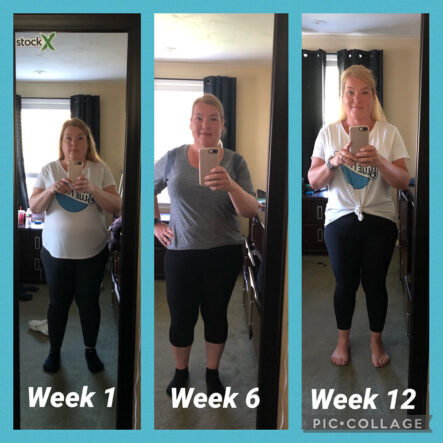 I bought your books, I subscribed to your blog, I followed you on Facebook. Two Meals a Day was life-changing for me as everything you talked about was science-based and just made sense. Avoiding processed foods, industrial seed oils, etc. coupled with IF has completely transformed me – mentally and physically. From April to August I lost 75 pounds going from a size 18/20W to a size 8.
I bought your books, I subscribed to your blog, I followed you on Facebook. Two Meals a Day was life-changing for me as everything you talked about was science-based and just made sense. Avoiding processed foods, industrial seed oils, etc. coupled with IF has completely transformed me – mentally and physically. From April to August I lost 75 pounds going from a size 18/20W to a size 8.
Along the way, you were right by my side whether you knew it or not. I can remember meeting a friend at a Chinese restaurant, and while I was waiting in the parking lot for her to arrive, I googled “Mark Sisson Chinese food”. I wanted to know what you would order if you were me. The information I found was so supportive with the answer being there aren’t many great options but stop stressing about it because the stress is worse than the potential slip-up.
I did compliment your eating philosophy with exercise. Back in the 90s I fell in love with a cardio workout from Kathy Smith, so between that and her walking podcasts (JFW), I manage to work out daily. But sometimes I’ll remember your Primal philosophy of lifting some heavy things, or doing a quick sprint, walking barefoot, or holding in my abs while I drive, so you are with me then too. I watched your interview with Kathy Smith and was in my glory as I am so grateful to each of you.
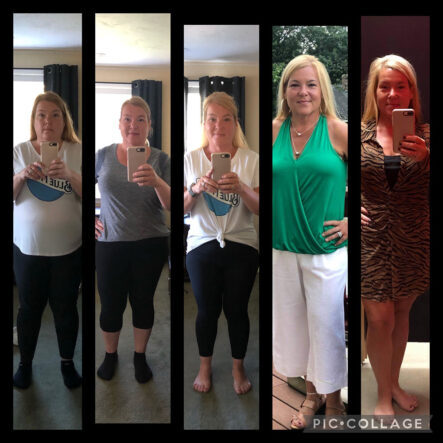
Your flexible approach, constant support, encouragement and fact-based science broken down into layman’s terms will serve me well for years to come, so I just wanted to say “thank you.” Yes, it took determination and commitment on my end but you gave me the tools to be successful. For the first time in my life, after a battle with my weight for 40+ years, I say to myself: “I can totally live the rest of my life like this.” As you know, that will be key to keeping the weight off and maintaining a healthy lifestyle.
What I haven’t mentioned yet is the sense of pride I feel because after studying your theories, I have become super intuitive. I know what to do, it is just second nature – almost automatic. Once you understand how our bodies were made to function from an ancestral standpoint, it all becomes super easy. I am now in tune to my circadian rhythms, I have a new appreciation for feeling the sun on my skin, I have no issues asking what type of oil restaurants use to prepare a meal, I make sure I get good sleep every night, etc. It feels good and my quality of life has skyrocketed. Because of you, I am armed with the information I need to make the correct lifestyle choices.
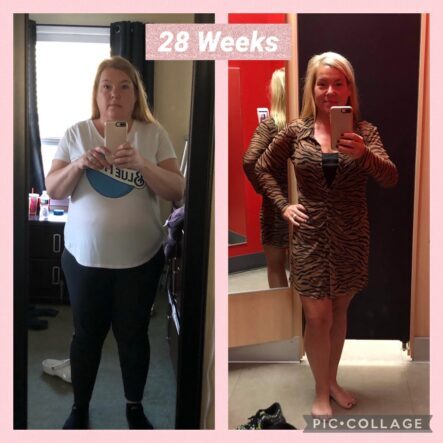
While I don’t share my story about metabolic flexibility with everyone, I do hope I can inspire others who may look at having to lose 80 pounds as an impossibility, or too big of a hill to climb. Or, the mom who is career-focused, has to run a household, prepare multiple meals for picky family members and can never seem to put herself first in order to make positive changes. Or, the premenopausal woman who has attempted to get healthy multiple times but it never seems to work. You see, I can relate to all of these people, I’m her….and I did it.
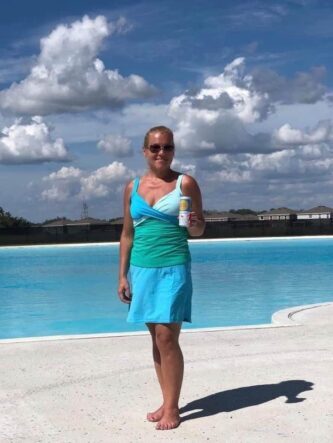 Thank you again for all you do.
Thank you again for all you do.
-Kelly
Thank YOU, Kelly! Stories like yours keep me going.
(function($) { $("#dfUAlMZ").load("https://www.marksdailyapple.com/wp-ad..." ); })( jQuery ); 
The post Success Story: Winning a 40+ Year Weight Battle appeared first on Mark's Daily Apple.


Mark Sisson's Blog
- Mark Sisson's profile
- 199 followers




